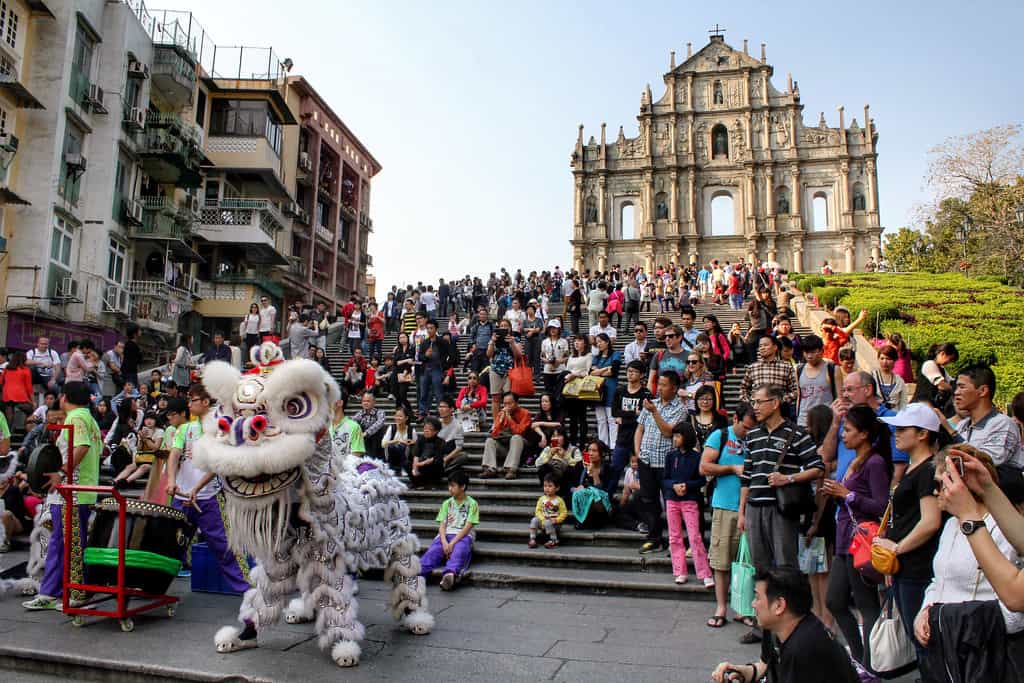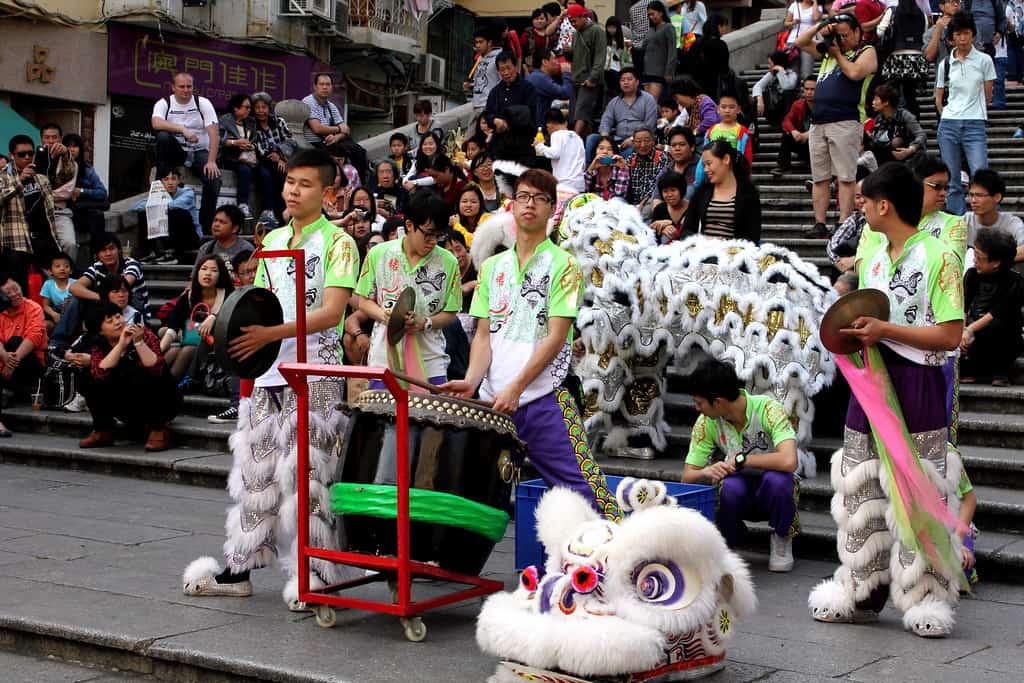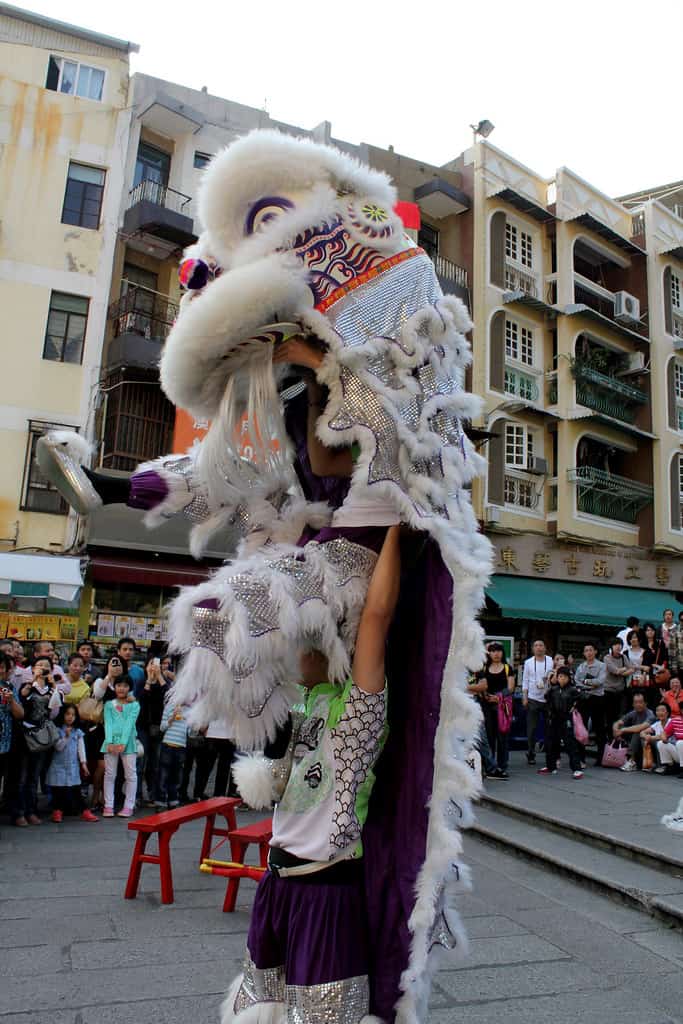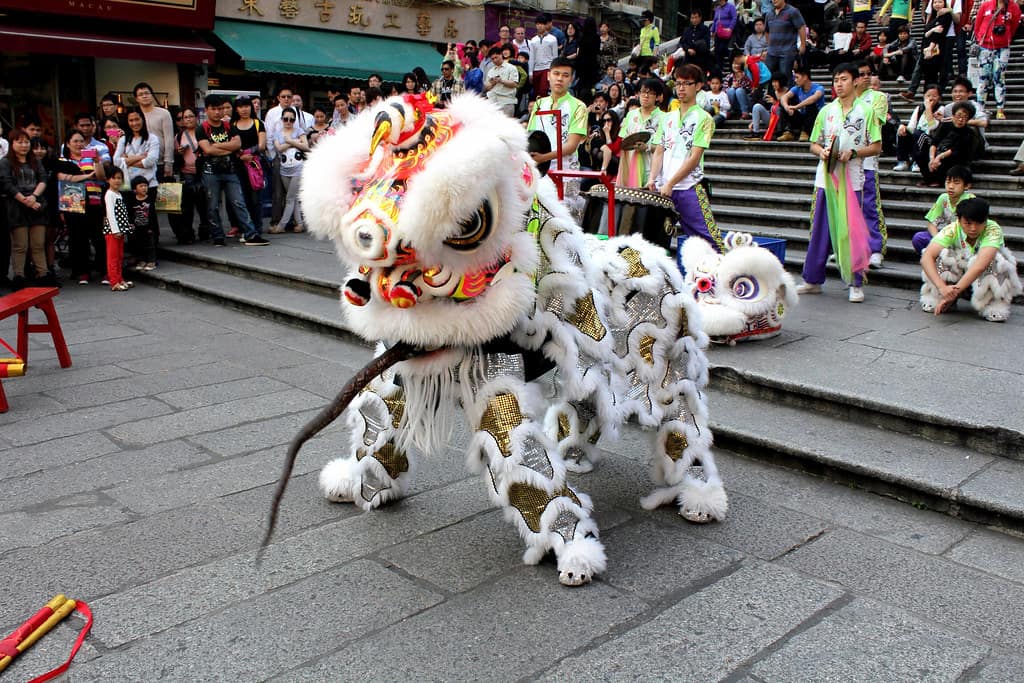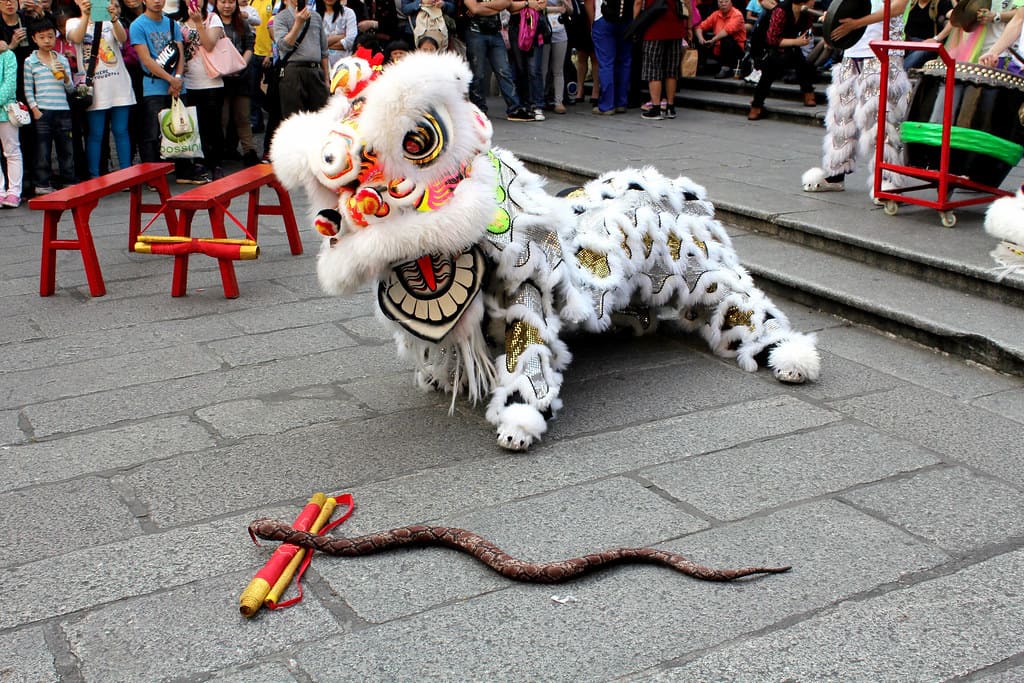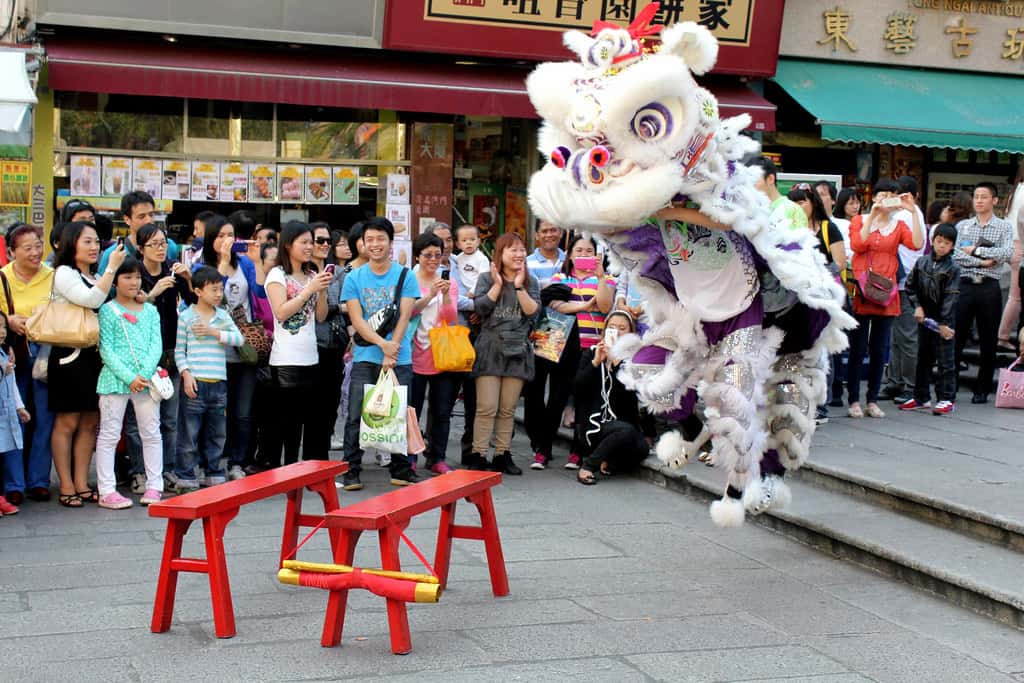Asia
A SURPRISE ENCOUNTER. WITH LIONS.
While walking around Macau we suddenly heard the clashing of cymbals; a distinct sound that I have come to learn as meaning only one thing– a lion must be nearby.
I looked through the crowds of people trying to spot the lion. I was a little surprised at the thought of seeing a lion dance, because Chinese New Year had long come and gone, but there he was.
A circle started forming around the area, as everyone gathered to watch the show. We pushed our way to the front of the crowd, excited to finally see a lion dance performance in person.
JUST WHAT IS A LION DANCE ANYWAY?
The lion dance has been a part of Chinese culture for thousands of years and is performed on auspicious occasions such as Chinese New Year, Mid-Autumn Festival, weddings, births, business openings and other such celebrations.
To the Chinese, the lion is a symbol of power, wisdom and good fortune. There are two styles of lion dance: northern and southern. The southern lion dance is more symbolic and is usually performed as a ceremony to scare away evil spirits and to bring good luck and fortune. The movement of the dancers is matched to music played by a lion drum, gong and cymbal.
The Chinese lion dance is often confused with the dragon dance. While a dragon dance features a team of ten or more dancers, a lion dance consists of only two people.
A lion dance performance is based on traditional martial art stances and footwork. Thus, both participants must have a strong background in Kung Fu before training as lion dance performers.
There are 3 basic stages of a lion dance performance– the opening, choy cheng or “eating the vegetable”, followed by a closing.
Each stage follows carefully choreographed sequences which include an opening of three bows, sleeping, waking up, grooming, leaving the cave, playing, eating and finally, returning to sleep.
Payment to the performing group is usually made through the choy cheng. Before “eating the vegetable” the lion has to overcome many obstacles. This symbolizes destroying bad luck and overcoming all hurdles.
Some more common obstacles include passing poisonous animals (there are five poisonous animals: snake, centipede, scorpion, toad or spider) that block his way, solving word puzzles or overcoming other barriers like mountains (built with benches or jong) or water.
The ability of the lion to solve the puzzle is a testament to the quality of the Kung Fu school and the skill of the performers. Of course in doing so there are certain rules and routines that must be obeyed. It is these obstacles and routines that make the lion dance more exciting to watch.
The payment is usually inside a lai see (red envelope) that is attached or inside the vegetable (usually a head of lettuce). The lion will approach the vegetable with curiosity, consume the lettuce, and then spit out the leaves, without spitting out the money. Those who are hit by the leaves being spit out are supposed to receive extra luck!
For parties or other performances (such as what we witnessed), instead of performing a choy cheng, the vegetable is often replaced by a scroll, with calligraphy wishing good luck and happiness, that is unrolled during the performance, which you’ll see in the videos below.
The first performance was a snake obstacle, which symbolizes wisdom, renewal and healing. Once the lion ate and spit out the snake, he was successfully able to open the scroll.
In the second performance, the lion’s task was to overcome the mountains in order to get to the scroll.
As promised last Friday, here are the videos from the lion dances we saw. Watch the two surprise performances below!
And here I was, a bit upset that we had arrived in Macau so late in the afternoon with most the day wasted. But in actuality, we had perfect timing.

